Books
Books
published in 2024

Wave of Blood
Is it the computerization of the planet
Or a loosening of my fidelity to suffering
I don’t understand the intensity
I’ve hidden here but I know I despaired
Of finding a physical place to keep
My tears. Now what. Seas that go turquoise
When you stop looking at them . . .
Wrestling with the mind of war, at times shocking in its self-analysis, Wave of Blood is a furious and sincere essay, an eclipse notebook, a family chronicle, all told in the poetry of witness.
Praise for Ariana Reines:
Ariana Reines is a go-for-broke artist who honors her traditions by being like no one else. Some of us have made a fetish of our stupidity, pretending to forget history, and some of us have made a fetish of despair, congratulating ourselves on melancholia, but Ariana is too brilliant and too alive for either of those sad luxuries... I am convinced of the authenticity of the summonses she receives and the summonses she issues and when I read her I am reminded that all of this is a calling before it's an identity or career. Her voice-which is always more than hers alone is a dialectic between the very ancient and the bleeding edge. - Ben Lerner
Reines's books are works of intellectual commitment and structural sophistication; at the same time, they allow the raw stuff of being, in all its messiness, to enter the page. -The White Review
Mind-blowing. - Kim Gordon
Her writing is queer and raunchy, raw and occult, seemingly never pulling away from her deepest vulnerabilities. Yet Reines simultaneously maintains a feeling of epic poetry, of ancient intention. She moves between worlds in search of the divine and the self. - The New York Times
These are the kinds of poems that reorient you in the world, make you understand how little you know, but how much is inside you. - NYLON

How to Leave the World
Everyone is asking about his identity. Gay? Muslim? French? Moroccan? Instead of choosing a side, he writes a book. A book about the forest and the city, Paris and Tangiers, shame and forgiveness, dating apps and spiritual discovery. A book about growing up as a diaspora kid in rural France, with desires that want to emerge at any cost. Told in mesmerising prose, How to Leave the World is a beautiful non-answer.
A rare book that depicts the isolation and poetry of rural life. — Annie Ernaux
What it takes to imagine social and physical freedom is what it meant to keep reading this incredible book. — Bhanu Kapil
Marouane Bakhti is a writer and arts journalist. Born in Nantes, France to a Moroccan father and a French mother, he studied history and journalism at the Sorbonne. He writes criticism for Mouvement magazine and lives in Paris. How to Leave the World is his first novel.
Lara Vergnaud is a literary translator of French and has translated over a dozen novels, including works by Zahia Rahmani, Fatima Daas, Mohamed Leftah and Mohamed Mbougar Sarr. Lara was born in Tunisia, grew up in the United States and currently lives in southern France.
978-1-7395161-3-0
21.6 x 13.9 cm
112 pp, paperback
September 2024

Black Meme
A history of Black imagery that recasts our understanding of visual culture and technology
In Black Meme, Legacy Russell, awardwinning author of the groundbreaking Glitch Feminism, explores the “meme” as mapped to Black visual culture from 1900 to the present, mining both archival and contemporary media.
Russell argues that without the contributions of Black people, digital culture would not exist in its current form. These meditations include the circulation of lynching postcards; why a mother allowed JET magazine to publish a picture of her dead son, Emmett Till; and how the televised broadcast of protesters in Selma changed the debate on civil rights. Questions of the media representation of Blackness come to the fore as Russell considers how citizen-recorded footage of the LAPD beating Rodney King became the first viral video. Why the Anita Hill hearings shed light on the media’s creation of the Black icon. The ownership of Black imagery and death is considered in the story of Tamara Lanier’s fight to reclaim the daguerreotypes of her enslaved ancestors from Harvard. Meanwhile the live broadcast on Facebook of the murder of Philando Castile by the police after he was stopped for a broken taillight forces us to bear witness to the persistent legacy of the Black meme.
Through imagery, memory, and technology, Black Meme shows us how images of Blackness have always been central to our understanding of the modern world.

Gaza or Palestin* or "West Bank" or (...)
Anita Di Bianco’s ongoing project, Corrections and Clarifications, is a newspaper without headlines, a cyclical reverse-chronology of daily revisions, retractions, re-wordings, distinctions and apologies to print and online news, printed in numerous languages, locations, and formats since September 2001. An intermittent catalog of lapses in naming and classification, of tangled catchphrases, obstinate patterns of mis-speech and inflection, connotation and enumeration. The twentieth anniversary hardbound edition of the publication, entitled The Error is Regretted, was published in 2021 by The Green Box in Berlin.
This 2024 iteration, in a xeroxed edition of 100, collects corrections to news items back to 1981 — with its focus on the Eastern Mediterranean region, on patterns of mis-telling and misrepresentation through the persistent misuse of the passive voice, the omission of widely observable and verifiable facts and events, the euphemizing and toning down of deliberate actions, erasures through shifts in terminologies, through bold mistakes and tentative corrections.
Anita Di Bianco’s works in film, video, and print take up, modify and re-work existing and re-imagined patterns and characterization. Her work involves the imitative act, a taste for the possession and expulsion of narratives, the appropriation and accumulation of familiar texts and writing styles. Anita uses widely varying sources: from theatrical and historical texts to oft-quoted cinematic clips and thematic references. She lives in Frankfurt am Main.

How Are Artists Chosen? Exclusivity, precarious work and asymmetries in Art Competitions
Ramaya Tegegne, Tiphanie Blanc
The third volume of a new series of publications by the collective Wages For Wages Against, acting for better work conditions in the visual arts and against all forms of discrimination.
In 2022, the collective Wages for Wages Against applied for the Swiss Art Awards with the ambition of questioning the very model of the prize and its impact on artists. Art competitions are presented as real opportunities for artists, and arise throughout their careers, starting with school—entrance selection procedure, juried evaluations, diplomas and honors distinctions—, all the way to professional recognition—Meret Oppenheim Prize, Marcel Duchamp Prize, Turner Prize, etc. Only a handful of artists are selected for merit-based reward. However, this logic of sorting and validation upholds an entire system that reproduces inequalities and that perpetuates precarity in a milieu that is exclusive, and thus excludes. The institutional practices of communication and selection, as well as the validation of unpaid labor, favor certain artists at the expense of others. In this context, we surveyed the artists who participated, are considering participating, or are not participating in the Swiss Art Awards competition, in the interest of understanding their experiences and sharing their demands. In a broader sense, we wish to rethink the founding principles of artists' support policies and work to build a less competitive art world.
Wages For Wages Against (WFWA, wfwa.ch) is a a militant collective and a campaign for the fair remuneration of artists in Switzerland, better work conditions, and an alternative economy of the arts.
Contributions by Nathalie Stirnimann & Stefan Stojanovic and Amandine Gay.

Imperfect Solidarities
Art, empathy and political solidarity.
Can empathy deliver political change? Does art that elicits emotional identification with others take us where we need to go? In Imperfect Solidarities, writer and art historian Aruna D'Souza offers observations pulled from current events as well as contemporary art that suggest that a feeling of understanding or closeness based on emotion is an imperfect ground for solidarity. Empathy—and its correlate, love—is a distraction from the hard work that needs to be done to achieve justice. Rather, D'Souza contends, we need to imagine a form of political solidarity that is not based on empathy, but on the much more difficult obligation of care. When we can respect the unknowability of the other and still care for and with them, without translating ourselves into their terms, perhaps we will fare better at building political bridges.
Aruna D'Souza is a writer and critic based in New York. She is a regular contributor to The New York Times and 4Columns.org, where she is a member of the editorial advisory board. Her writing has also appeared in The Wall Street Journal, CNN.com, Bookforum, Frieze, Momus, and Art in America, among other places. Her book, Whitewalling: Art, Race, and Protest in 3 Acts (Badlands Unlimited), was named one of the best art books of 2018 by The New York Times. She is the recipient of the 2021 Rabkin Prize for art journalism and a 2019 Andy Warhol Foundation Art Writers Grant.
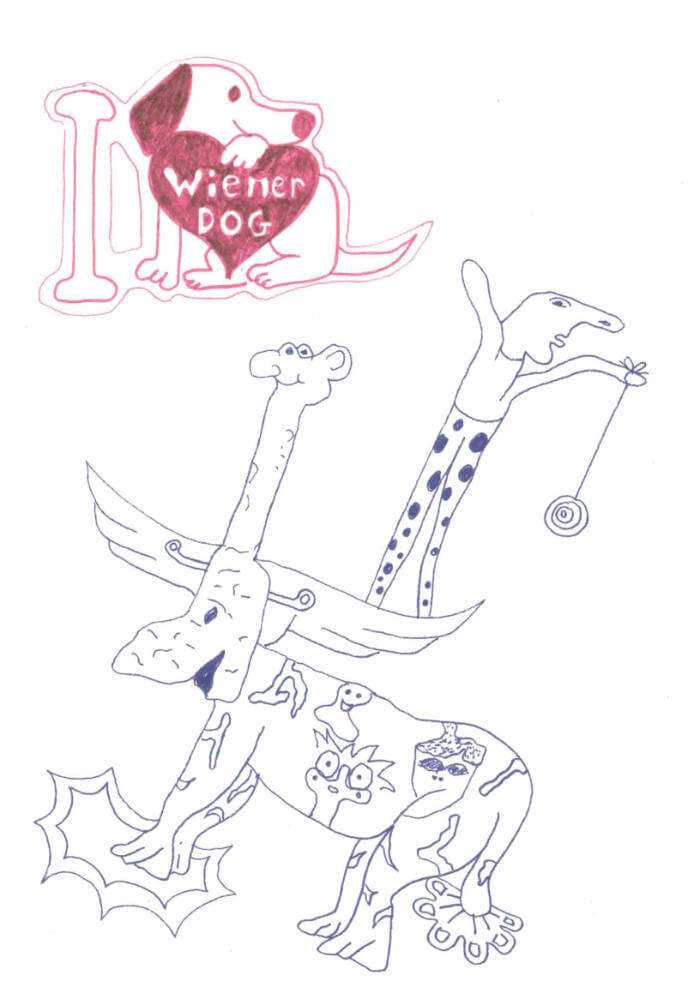
I Love Wiener Dog
A series of “Bad Paintings” by the Geneva-based artist.
White noise escapes from the 3rd floor of an opulent building located in the Eaux-Vives district. In an apartment, converted into a laboratory, hum a whole bunch of complicated machines linked together by a tangle of multicolored electrical wires. In the middle of all this mess, wrapped in transparent plastic sheets, a new experience will take place in a few moments.
Indeed, for the first time in history, a team of researchers will be able to precisely decode the creative process of an artist. Plunged into an artificial coma, the Genevan painter Josse Bailly wears a sort of motorcycle helmet, from which colorful cables spring. At the end of the test, Bailly's abundant pictorial practice will no longer have any secrets for the scientists present. The mechanism of his artistic frenzy, this true fury to paint, will be translated in an intelligible and logical manner.
Suddenly, a crackling sound is heard. Eyes rolling back, Bailly suddenly sits up square on the massage table transformed into an electric chair. Foaming at the mouth, he chants a series of names of old rock groups from the 70s. Sparks come out of the artist's blackened nostrils. His head looks like it's going to explode any minute. The screens light up in the smoke. Words scroll continuously on the monitors: "The beanbag chair", "Harvard beets", "I love wiener dog".
The pellets go off, putting an end to the strange scene which is more reminiscent of a planned execution than a scientific study. An expression of perplexity freezes on the stunned faces of the team of researchers. In a heavy silence where there is a smell of scorching, a young assistant risks slipping in a confused voice: "I think he likes to illustrate wiener dogs because he finds them cute and it's cool to draw them."

The Significance and Relevance of Early Modern Indian Painters to the Contemporary Indian Art
The Significance and Relevance of Early Modern Indian Painters to the Contemporary Indian Art, written in 1971, reevaluates the legacies of painting inherited by the artist Nilima Sheikh.
Drifting between two inadequate models, one an import of British Colonialism, and another desperate for an identification as "Indian", the artist engages with the works of Raja Ravi Varma, Abanindranath Tagore, Amrita Sher-Gil, Nandalal Bose, and Jamini Roy, as well as the critical and art historical writing surrounding these practices, to offer a revaluation of these legacies and a possible way forward—one that she would go on to articulate in her own decades-long engagement with painting.
Published here for the first time, The Significance and Relevance of Early Modern Indian Painters to the Contemporary Indian Art was written as part of Nilima Sheikh's Master's in Painting at the Faculty of Fine Arts, Maharaja Sayajirao University of Baroda. The complete facsimile of this dissertation is accompanied by a recent interview with the artist by Nihaal Faizal and Sarasija Subramanian.

Itinéraires Fantômes (box set)
Hélène Cixous, Alexandra Grant
Itinéraires Fantômes is an oracle deck created by Alexandra Grant with Hélène Cixous in celebration of H. Cixous' work.
The Itinéraires Fantômes deck consists of 72 cards in six categories: animots, creatures, and entities that include Those from Below, Those from Above, Those Who Fly/Steal, who travel via Portals, manipulate Messages and Symbols, and have Superpowers. The cards are accompanied by a booklet in English and French.
The images on these cards come from family, friends, and artists who have been inspired by Hélène Cixous' writing. Artists include: Adel Abdessemed, Pierre Alechinsky, Sara Barker, Gabrielle Berger, Louise Bourgeois, Leonardo Bravo, Maria Bussmann, Sarah Cain, Lewis Carroll, Bertrand Charneau, Maria Chevska, Michael Kennedy Costa, Laura Darbutaitė, Tacita Dean, Edgar Fabián Frías, Jeffrey Gibson, Francisco Goya, Alexandra Grant, Mathew Hale, Simon Hantaï, Johanna Hedva, Roni Horn, Victor Hugo, Hanna Hur, Franz Kafka, YeRin Kim, Lynn Marie Kirby, Jean-Jacques Lemêtre, Colin Lemoine, Laure Prouvost, Elsa Prudent, Addy Rabinovitch, Keanu Reeves, Cindy Rehm, Saranya Siegel-Berger, Shinique Smith, Nancy Spero, Luc Tuymans, Unyimeabasi Udoh, Roger Viollet, Anna Winger.

Instructions for The Lovers
A taut, tender collection of poems woven with sadness and loss dealing with aging, attachments, and the precarity of life.
“Dawn Lundy Martin’s poems read like a real-time excavation of what poetry can and can’t do,” writes Maggie Nelson. In Instructions for The Lovers, her most stripped down, direct work to date, Martin creates a poetic field dense with thought, image, and sound as she reflects on her relationship with her mother, experiences of queer polyamory, lesbian sex, and the racist conditions within the dying American university system. With rigorously embodied vulnerability and virtuosity, Martin constructs moments of pleasure, humor, and sexiness woven with grief—a tender body to live in.

GLEAN - Issue 4 (ENG edition)
Apparatus 22, Dak’Art, Tarek Atoui, Sirah Foighel Brutmann & Eitan Efrat, Yoko Ono, Pei-Hsuan Wang, Anna Zemánková, Sarah Smolders, Miranda July, Britta Marakatt-Labba, Ignacio Barrios
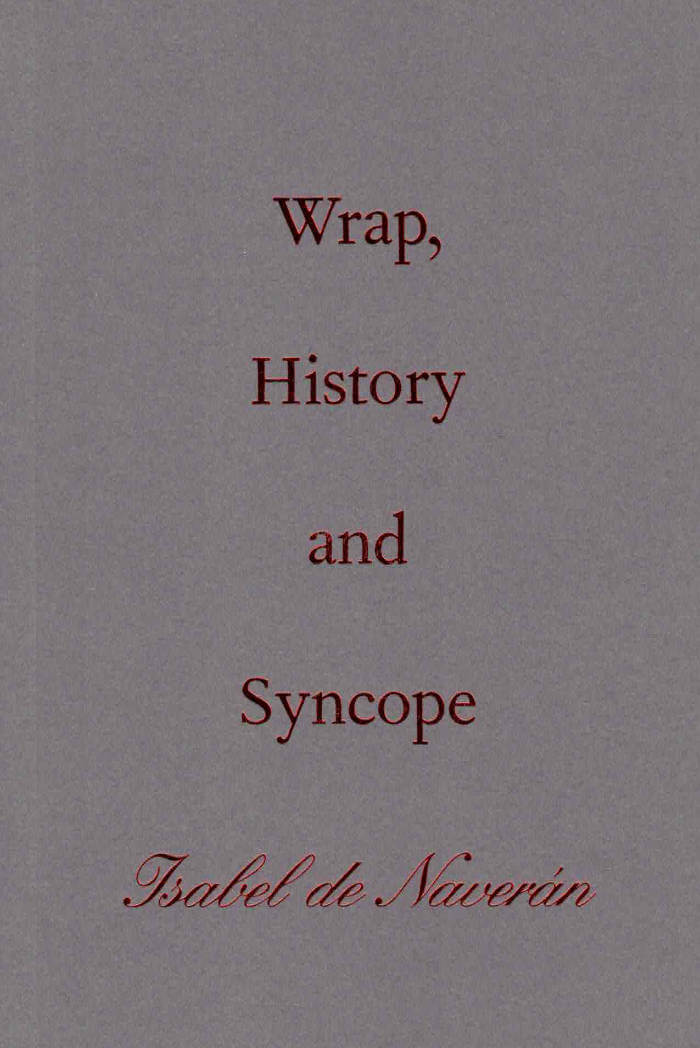
Wrap, History and Syncope
18 July 1936, Bayonne. After hearing the news of the Fascist uprising, the Spanish dancer and bailaora Antonia Mercé y Luque, known as La Argentina, suffers a syncope and dies in fateful synchrony with the Second Republic. History, and the artist’s body, have been seized and broken by the event.
In close dialogue with images and historical documents, Isabel de Naverán pursues the reverberations of that shock and how it resonates with collective pain and artistic translations (by Federico García Lorca, Gertrude Stein, Kazuo Ohno and others). How does history affect and move through bodies? How do living bodies carry and pass on cultural legacy and collective memory? What do these complex movements reveal about the present? Wrap, History and Syncope is an affective journey that invites the reader into tracing and revisiting other bodies, to ultimately dance their difference and multiplicity for oneself.
Isabel de Naverán is a writer and researcher. Concern with the passage and use of time is the backbone of her work, which focuses on bodily transmission and the examination of the concept of historical time by way of ephemeral and fugitive practices. She holds a PhD in art from the University of the Basque Country.
Translation from Spanish: Toni Crabb
Graphic design: Michaël Bussaer
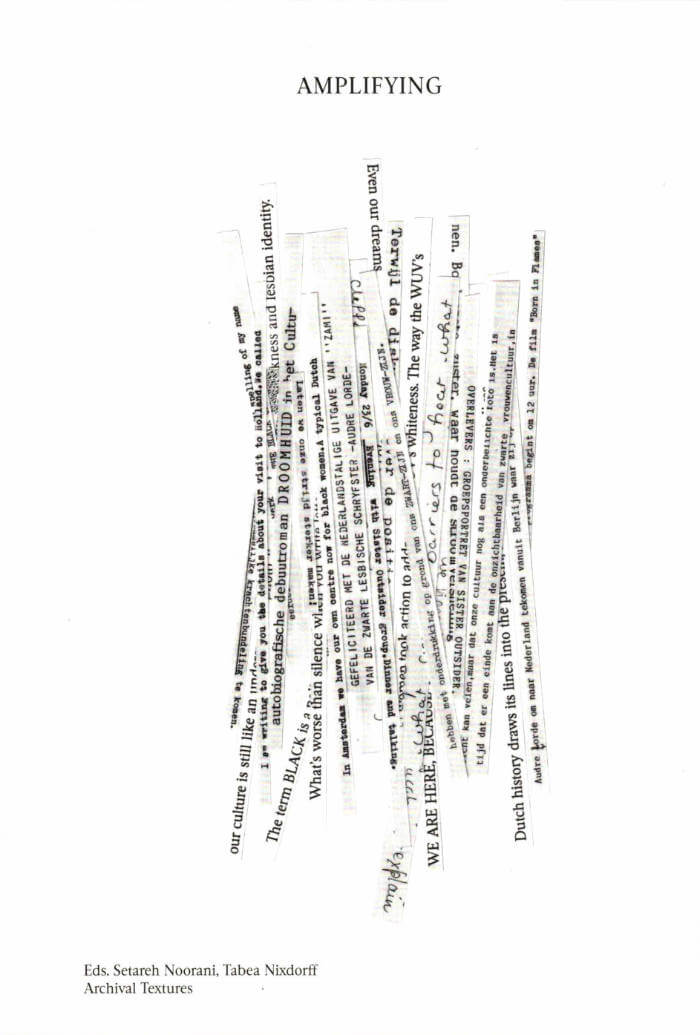
Archival Textures - Amplifying
Setareh Noorani, Tabea Nixdorff
The book Amplifying brings together written manifestations that trace the beginnings of Black feminism in the Netherlands. Amplifying means giving credit to, mentioning, over and over, and supporting the circulation of sources and authors that are formative for our thinking and practices. In the early 1980s, the political term “black” (zwart in Dutch) was introduced in the Netherlands to build alliances between women from different diasporic communities, who were faced with racism in their everyday lives.
Archival materials featured in this book include the original manuscript of the essay “Survivors: Portrait of the Group Sister Outsider” (1984), written by Gloria Wekker in collaboration with the Black lesbian literary group Sister Outsider, the seminal speech Statement of the Black Women’s Group (1983) by Julia da Lima, a contextualizing interview with Tineke E. Jansen and Mo Salomon (1984), excerpts from the book launch of Philomena Essed’s Everyday Racism (1984), and short texts authored by other Black feminist groups in the Netherlands, such as Zwarte Vrouwen & Racisme, Flamboyant, Ashanti, and Groep Zwarte Vrouwen Nijmegen.

Archival Textures - Posting
Carolina Valente Pinto, Tabea Nixdorff
The book Posting brings together a selection of feminist posters from Dutch archives to reflect on posting as an activist strategy, holding the potential to create counter-publics to mainstream culture and to fight against the erasure, exoticization, or tokenism of bodies and experiences that deviate from normative preconceptions.
As is the case for many professions, in the history of Dutch graphic design the absence of women, non-binary, queer, Black designers is striking. This doesn’t only point back to systematic processes of exclusion in the first place, but also to the biases at play regarding whose work is remembered and archived. While efforts have been made to add forgotten names to the existing canon, the many posters, flyers and other printed matter shelved in queer and feminist archives remind us to question the notion of single authorship altogether and instead study graphic design as a decisively collaborative and transdisciplinary practice, which is especially true for community-led and volunteer-based projects.
The posters featured in this book point to this rich landscape of feminist organizing, and were found at the International Institute of Social History and the International Archive for the Women’s Movement (IAV-Atria) in Amsterdam.
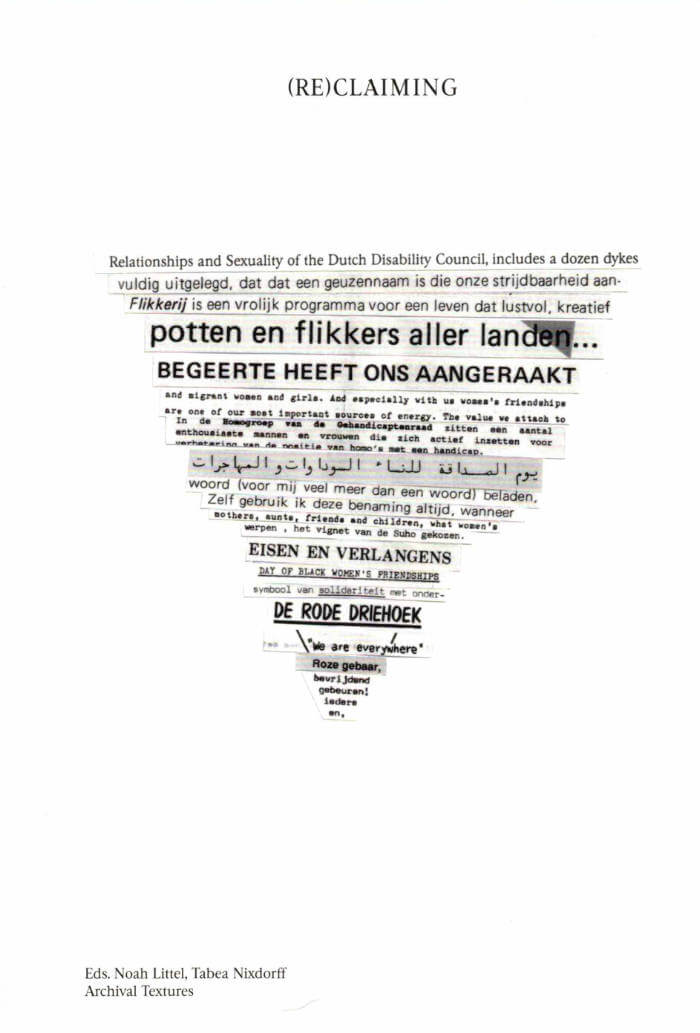
Archival Textures - (Re)claiming
The book (Re)claiming presents ways in which various queer and feminist communities and initiatives in the Netherlands have (re)claimed the triangle—along with other symbols, words and stories—and in doing so take up an empowering position in a hostile society.
Besides a collection of buttons, archival materials featured in this book include short statements and flyers by queer groups such as SUHO, Sjalhomo, Roze Front, Roze Driehoek, Roze Gebaar, Van Doofpot tot Mankepoot, Interpot/ILIS, Lesbisch Archief Amsterdam, Strange Fruit Vrouwen and Groep Zwarte Vrouwen Nijmegen, as well as a text by Karin Daan, the designer of the Homomonument in Amsterdam. With this selection, this book brings together queer, trans, crip, feminist, Jewish and Black perspectives on (re)claiming as an activist strategy.
Most of these materials were researched at IHLIA LGBTI Heritage in Amsterdam, with additions found at the International Institute of Social History and the International Archive for the Women’s Movement (IAV-Atria) in Amsterdam, and LAN Lesbisch Archief Nijmegen.

First Drafts #2: Canonically Speaking
Canonically Speaking is the second title to appear on the First Drafts imprint, a zigzag in Kunstverein Publishing’s output that’s dedicated to publishing completed manuscripts that would otherwise, for an array of reasons, not see the light of day in this rough early form.
Central to Canonically Speaking is the idea that (female) life is an inherently surrealist experience. In this spirit, the ‘absurd’ is embraced as a means to speak out on themes such as self-image, spirituality, mental health and work. While slipping between poetry, comprehensive list-making, knock knock jokes and intertextual references, forms of recital and misinterpretation often take place, whereby characters quote and repeat sentences and words from a large variety of sources, jumping from the health benefits of whale blubber to court transcripts of Bill Clinton's impeachment to the plasma that is released when microwaving two grapes side by side.

The Wastes
After the death of her mother a woman decides to visit a familiar strip of rural upland, darkly identified on the South Pennines Ordnance Survey map as: The Waste. As she moves between trains, shunted by public encounters and haunted by past bar jobs, damp bedsits and a press shot of Vanessa Redgrave smoking in the bath, found slipped between the pages of her mother’s diary, the threshold between her past, present and future self dissolves. Fringe images she has neither designed nor authored begin to steer her toward grid reference 3499, where underfoot the semi-solid mud turns with worms and ants.
The Wastes is published as part of Arrhythmia, a series curated for Book Works by Katrina Palmer.
Roy Claire Potter works between performance and experimental art writing with recent work commissioned by Tate Britain and Tate Publishing, Reduced Listening for BBC Radio 3, Cafe OTO and Counterflows, and Primary. They are Senior Lecturer in Fine Art at Liverpool John Moores University.
Katrina Palmer is an artist and writer, living in London. She is the author of The Dark Object (2010), The Fabricators Tale (2014), End Matter (2015) and Black Slit (2023), all published by Book Works. She has exhibited extensively, including with an Artangel Open commission (2015), at Henry Moore Institute (2015-16), Yorkshire Sculpture Park (2018), and with Estuary and Waterfronts (2021). She received the Paul Hamlyn Foundation Award for Artists (2014).
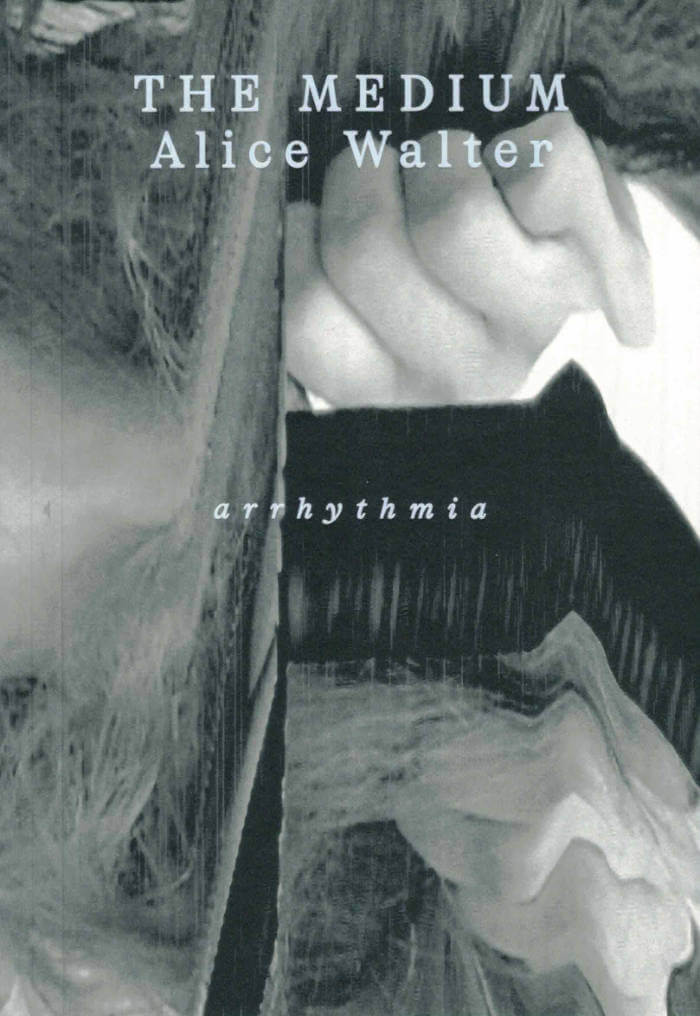
The Medium
To read The Medium is to be submerged in a stream of consciousness populated by uninvited voices from the underworld. Animated, urgent, and brutally propulsive, this cacophony of competing narratives begins to upset the boundary between the living and the dead. The Medium is an alchemical novel, shimmering with insight from the depths of a black lake.
The Medium is published as part of Arrhythmia, a series curated for Book Works by Katrina Palmer.
Alice Walter is an artist, writer and medium – living and working in the UK. She has a BA in Fine Art, Film and Video from Central Saint Martins, UAL and a MFA from The Ruskin School of Art, Oxford University. Her practice combines collage, psychosexual sculpture, VHS and shamanism. Through these disciplines, Alice creates surreal and sensory spaces that open channels for the unseen.
Katrina Palmer is an artist and writer, living in London. She is the author of The Dark Object (2010), The Fabricators Tale (2014), End Matter (2015) and Black Slit (2023), all published by Book Works. She has exhibited extensively, including with an Artangel Open commission (2015), at Henry Moore Institute (2015-16), Yorkshire Sculpture Park (2018), and with Estuary and Waterfronts (2021). She received the Paul Hamlyn Foundation Award for Artists (2014).

Saborami: Expanded facsimile edition
Cecilia Vicuña created Saborami in the aftermath of the September 1973 military coup in Chile. Combining poetry, journal entries, documentation of artworks including assemblages and paintings, the book was published in Devon, England in an edition of 250 hand-made copies by the artist-led Beau Geste Press. It was one of the first artistic responses to the violence of the fascist junta.
In recent years, Vicuña has gained increasing renown, including a retrospective at Kunstinstituut Melly (FKA Witte de With, 2019) and installations at the Guggenheim (2022); and Tate Modern (2023). Saborami is one of her most important works, made at a turning point in her life and career, and reverberating through to the present day. Though the book is highly regarded, it has also been hard to access. This new, expanded facsimile edition remedies this oversight, and restates Saborami as a central example of artistic engagement in material and revolutionary resistance.
Engaging obliquely with the legacies of surrealism, contemporaneous experiments in concrete poetry and the British conceptual art practices of the 1960s and 1970s, Saborami is part of an exilic and internationalist tradition. Years ahead of her time, Vicuña outlines an eco-socialist and feminist vision in the face of defeat.
Coinciding with the fiftieth anniversary of the book’s original publication and of the coup in Chile, this expanded edition contains a new introduction by art historian and curator Amy Tobin and poet and writer Luke Roberts. It includes rarely seen archival material from Vicuña’s time in London, such as contributions to the feminist newspaper Spare Rib, commentary from BBC coverage, and her role in Artists for Democracy in Chile and other solidarity campaigns.

Confidences / Oracle
Oracles don’t require belief—they now theatrically suspend disbelief. No longer advisors of world policy, they run Locus Solus, a town that has come to ramble around an eponymous theatre and chocolate factories. Theo, a centuries-old vampire intent on remaining contemporary through performance, visits Locus Solus, which is hosting Praise Estate, an international theatre festival. He uses the festival as an opportunity to stay with Gean, his oracle boyfriend, who is there visiting family. Theo has a fetish for the future, fixated on the one thing he is in no shortage of.
Confidences / Oracle is a lover’s trip to a weeklong theatre festival. A vehicle for recontextualising recent performance scripts and texts, Oracle is the third instalment in Ivan Cheng’s Confidences series, which intertwines vampires and performance as sites for circulation and recognition.
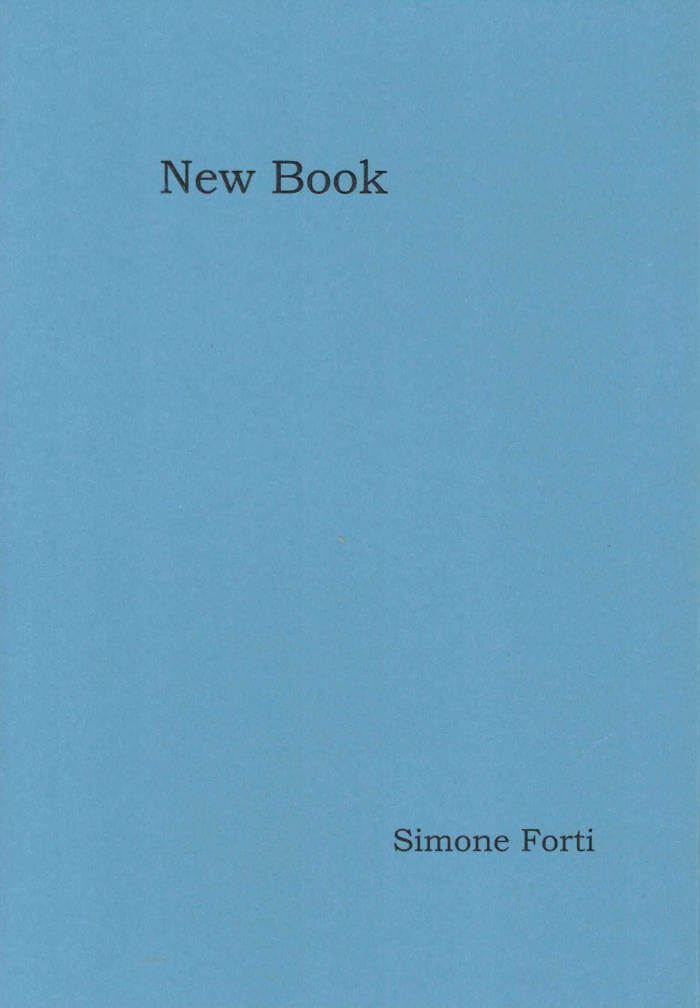
New Book
A new poem composed by the legendary dancer, artist and choreographer Simone Forti.
New Book is the title of a new poem composed of three existing poems re-edited by Simone Forti. As reading this poem, one moves forward with wonder amid everyday memories, recollections of life, a sense of civic duty, glimpses of a precarious world, the beauty of nature, melancholy, a rage to live.
American dancer and choreographer Simone Forti (born 1935 in Florence, Italy) has been a leading figure in the development of contemporary performance over more than fifty years. Artist, choreographer, dancer, writer, Forti has dedicated herself to the research of a kinesthetic awareness, always engaging with experimentation and improvisation. Investigating the relationship between object and body, through animal studies, news animations and land portraits, she reconfigured the concept of performance and dance. Forti emigrated from Italy with her family via Switzerland to Los Angeles in 1938, where she subsequently studied for four years with choreographer Anna Halprin and has since spent most of her life. She joined the experimental downtown art scene in New York during the emergence of performance art, process-based work and Minimal Art and spent a fruitful time in Rome in the late 1960s, where she used the spaces of L'Attico to study and perform. Her work is seen as a precursor of the famous Judson Dance Theater—a group of artists experimenting with dance, including Trisha Brown, Steve Paxton, and Yvonne Rainer—and Minimal Art, although she prefers to be referred simply as a "movement artist."

What Can Theatre Do
Miguel A. Melgares, Silvia Bottiroli
What Can Theatre Do invites artists and thinkers to explore the potential of the performing arts, the political role of theatre and its ability to imagine alternative realities and future scenarios, ranging from essays to artistic interventions.
At a time when the relation between art and society is under permanent scrutiny, the utterance What can theatre do serves as an open invitation for artists and thinkers alike to reimagine the potential agency of the performing arts. The formulation of this sentence is both ambitious and ambiguous since the affirmative or interrogatory status remains undefined. The intonation of the sentence can provide both a sense of hope and belonging or a nihilist sensation of powerlessness. It could provide a resource for research development and analytic inquiries, but could also serve as a suggestion to trigger political action.
From fictional interviews to recipes, social-media exchanges to dramaturgical texts, theoretical essays to artistic interventions, the contributions gathered here are a diverse and multifaceted collection of dialogues. These interventions are singular and unique but share concerns and desires about the politicality of theatre as a realm where possible alternative realities can be enacted and potential future scenarios can be collectively rehearsed.
What Can Theatre Do tries to explore the idea of a book as a complex performative apparatus that can generate a space within which art and theory, and therefore also strategies of reality-making and of fiction-making, can entangle and affect one another, creating possibilities for the emergence of the not yet imagined.
Contributions by Lotte van den Berg, Carolina Bianchi, Silvia Bottiroli, Ilenia Caleo, Laura Cull Ó Maoilearca, Piersandra Di Matteo, Valeria Graziano, Ainhoa Hernández Escudero, Samara Hersch, Asa Horvitz, Mala Kline, Low Kee Hong, Tom Oliver Jacobson, Miguel A. Melgares, Juan Miranda, Ogutu Muraya, Mazlum Nergiz, Andrej Nosov, nyamnyam (Ariadna Rodríguez and Iñaki Alvarez), Giulia Palladini, Venuri Perera, Livia Andrea Piazza, Amanda Piña, Annalisa Sacchi, Mariana Senne, Agat Sharma, Lara Staal, Elioa Steffen, Rolando Vázquez, Elioa Steffen, Suvani Suri, Pankaj Tiwari, Ingrid Vranken.

desespiegles
This publication is presented as an object-book-manifesto of a ‘desespiegles’ way of thinking. It “translates” the trains of thought that architect-artists Anne Philippe and Jolien Naeyaert exchanged via videoletters. The videoletters mainly occurred during the covid period. Questioning the scope of the addressed images, these exchanges revealed a play of symmetries. It shows a series of interrogations, linking the intimate with the collective. The move towards a publication was obvious after conversations with Loes, Phyllis, An and Teresa of nadine. The desire to activate reading in a performative way, mirrors the exchange of videoletters. It continues the process-based methodology that inventively gave birth to a publication through the physical manipulation of the work. The riso-technique proved particularly suitable for this project, as the hands, the gaze and the exchange all played a role during the object-making process.
Dannie.n is an art-zine, published by nadine, about the artistic research, themes, and topics of discussion of the artists involved in nadine. nadine invites an artist or collective to create each new edition.
Dannie.p is a limited-edition artist's book by desespiegles (57 copies). nadine is supported by Vlaamse Gemeenschap, VGC, Brussels Hoofdstedelijk Gewest.

sur la route
sabiche, les lutins dîle de france and 1 more
Sur la route, de sabiche est la version housewife-poétesse kicked out de la maison où elle vivait, qui se retrouve on the road yeah, le long des pissenlits traînant d'énormes valises, pleines de livres et de bidules inutiles-essentiels, dont un crâne humain avec qui elle parle. Des lutins et Dodie Bellamy - dont sabiche traduit l'essai "L'écriture comme accumulation compulsive" - viennent l'aider...